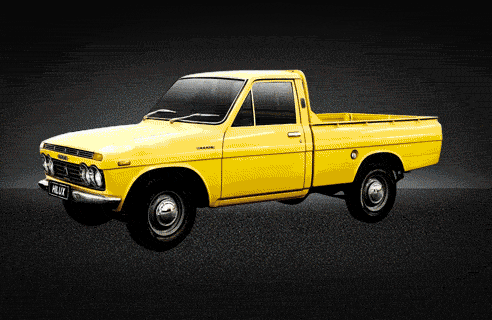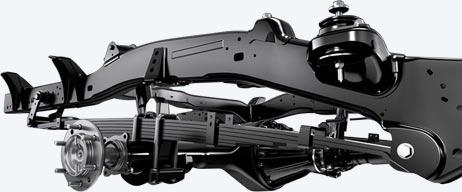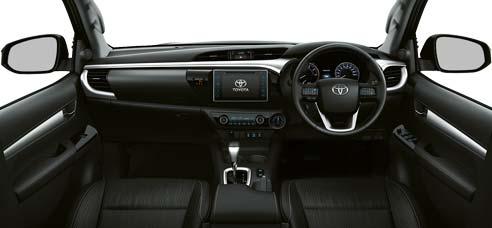The eighth-generation Toyota Hilux is here and a new era of tough.
From the front a striking design with bold, aggressive lines puts the all-new Hilux at the forefront of modern bakkies the world over.
Tougher, stronger and more capable off-road than ever before. At 5,335 mm long, 1,855 mm wide and 1,815 mm high, the new Hilux is 75 mm longer, 20 mm wider and 45 mm lower than its predecessor.

- Reinforced and more durable.
- Tougher, stronger and more rigid.
- Anti-Lock Braking System (ABS).
- ISO-FIX child restraint system.
- Electronic Brake Force Distribution (EBD).
- Vehicle Stability Control (VSC).
- Brake Assist (BA).
- Up to seven airbags (Driver, front passenger, curtain shield, driver knee, front side).
- Advanced technology.
- Auto door lock.
- Remote control central locking.
- Anti-theft system with an independently powered alarm immobiliser.
- Ultrasonic glass breaking.
- Movement sensor.
Under the bonnet is a downsized 2.8-litre turbo-diesel four cylinder replacing the old 3.0-litre. The all new 2.8 GD-6 can also be found in the new Fortuner.
The six-speed automatic transmission respectively have outputs of 130kW at 3400rpm and 450Nm between 1600-2400rpm, where the 2393cc 2.4 GD-6 delivers 110kW at 3400rpm and 400Nm from 1600-2000rpm.
The obvious reason to downsize the engine's capacity is fuel economy, and the Hilux's official ADR combined cycle claim of 8.5 litres per 100km is decent.
From diesel to petrol, Toyota is still using the 2.7 VVTi and the normally aspirated petrol motor is now rated for 122kW at 5200rpm and 245Nm at 4000, at a cost of 10.4 litres per 100km with six-speed auto transmission and 10.7 litres per 100km with a five-speed manual gearbox.

All Hilux engines now also have a Drive-Mode switch that lets you choose between 'Eco' and 'Power' settings. Eco mode reduces power consumption under acceleration as well as heating and cooling to improve fuel economy, while Power mode sharpens throttle response.

With a switchable all-wheel drive system, the new Hilux has a dual-range transfer case and limited-slip front and rear differentials. The all wheel drive Hilux also has an electromagnetic differential lock at the rear.
The length of the rear leaf springs has been increased by 100mm to 1400mm to reduce vibration and they've been mounted 50mm further apart to improve stability, especially when heavily loaded. This also allows more rear-wheel travel over rocky or uneven terrain.
The traction control automatically brakes a slipping wheel and re-distributes drive torque to those which have grip, while hill descent control uses both brakes and compression to hold speed between five and seven km/h.
The all new Hilux got a new modernised cabin, with a tablet style seven inch touch-screen display that works like a smartphone in the higher spec models. But in the base models you still get the 6.1 inch touch-screen.

The cargo deck of the new Hilux has been made larger, stronger and more practical. Maximum cargo deck width has increased from 1,544 mm to a class-leading 1,645 mm.
